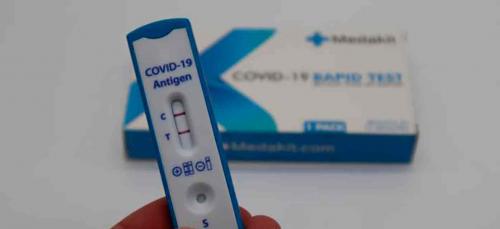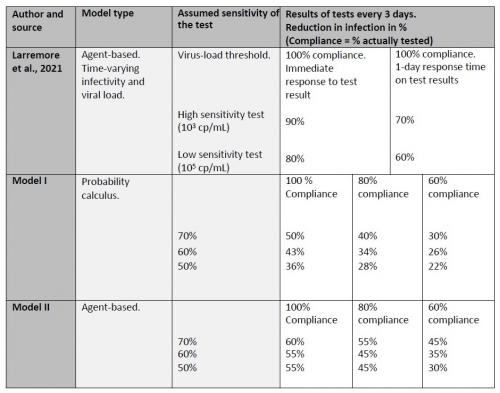Screening with rapid tests twice a week can significantly reduce infection in schools and workplaces

Researchers from Roskilde University's PandemiX Center, together with collaborators at the Niels Bohr Institute at the University of Copenhagen and the University of Southern Denmark, have investigated the epidemiological use of rapid tests (antigen tests with rapid response) for COVID-19. In the report, the researchers focus on using these tests for targeted screenings in defined groups of people.
The researchers developed two mathematical models (a purely statistical model and an individual-based model), which show the effect of repeated screening with antigen tests, including in particular the balance between how often tests are conducted, the sensitivity (the true positive rate) and how much of the group is actually tested. Despite the substantial differences in approach, both mathematical models show that screening in workplaces and schools with antigen testing has the potential to reduce infection rates by 36-55%.
Antigen testing is a useful epidemiological tool in the fight against COVID-19
Antigen tests can be performed on site and provide a quick response but are less sensitive than PCR tests. The positive effect of antigen tests is due to the fact that the lower sensitivity of antigen tests is outweighed by the benefits of frequent tests and a rapid result. The mathematical models assume that people who test positive go into isolation immediately and do not return until they stop posing a risk of infection. The two mathematical models do not take account of the effect of the existing infection detection efforts.
Three models give consistent results
Selected results from the authors' two models are summarized in the table below. Even the most conservative scenario (50% sensitivity and 60% participation) leads to a 22-30% reduction in infection at schools or in the workplace. The most optimistic scenario (70% sensitivity and 100% participation) leads to a 50-60% reduction in new infections. In the table, the two models are compared with new American research conducted by Daniel B. Larremore from the University of Colorado Boulder (et al.), who earlier this year concluded that a high-sensitivity test with a one-day response time (e.g. PCR tests) is less effective than a low-sensitivity test with an immediate response (e.g. antigen tests).

The report has been prepared at the request of the Statens Serum Institut's expert group for mathematical modelling of COVID-19.
The authors of the report:
Associate Professor Viggo Andreasen, PhD fellow Christian Berrig, visiting researcher Søren Ørskov, postdoc Rasmus Kristoffer Pedersen, professor (mso) Karen Angeliki Krogfelt and professor Lone Simonsen (Roskilde University's PandemiX Center).
PhD fellow Andreas Eilersen, PhD fellow Bjarke Frost Nielsen and Professor Kim Sneppen (Niels Bohr Institute, University of Copenhagen).
Professor Christine Stabell Benn (Danish Institute of Advanced Study, University of Southern Denmark).